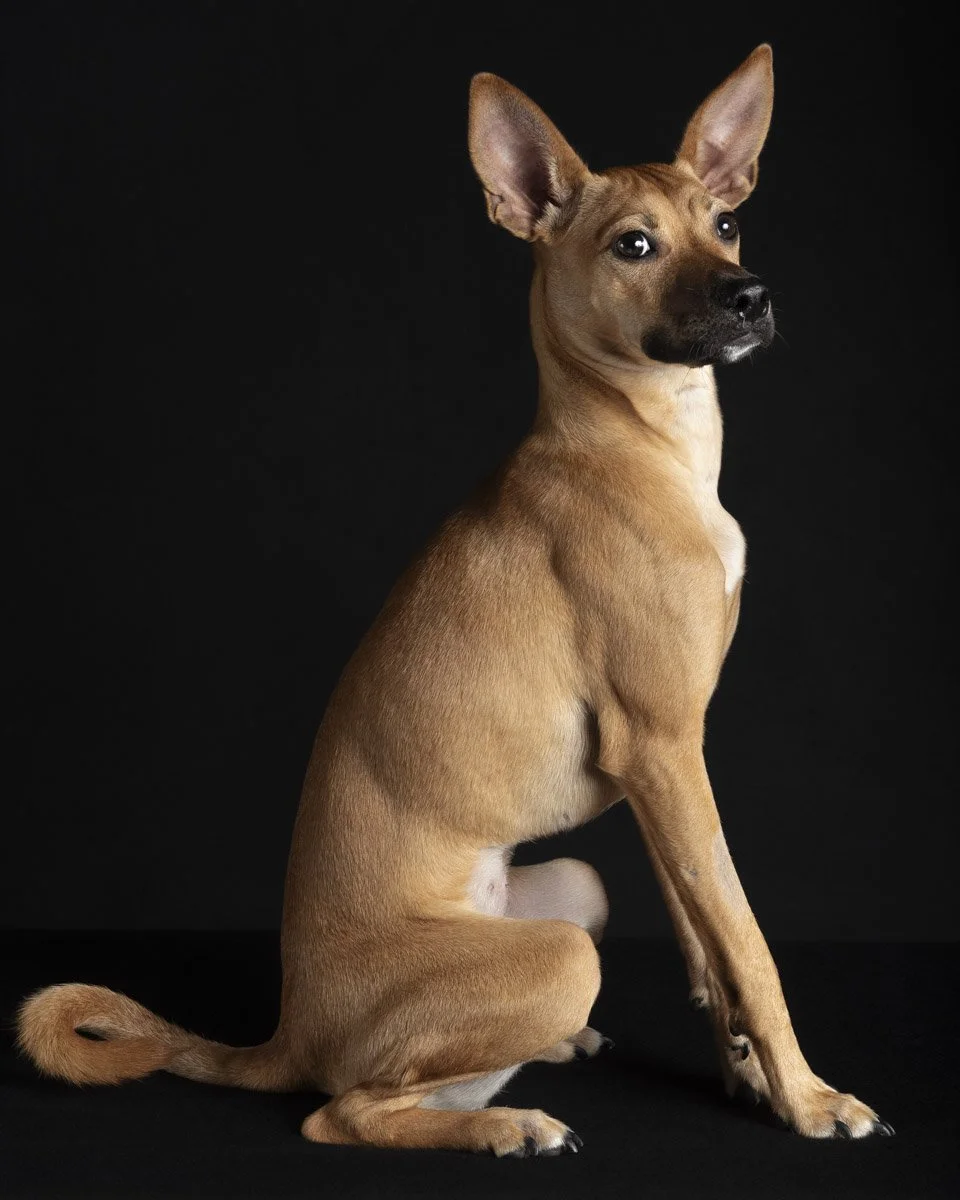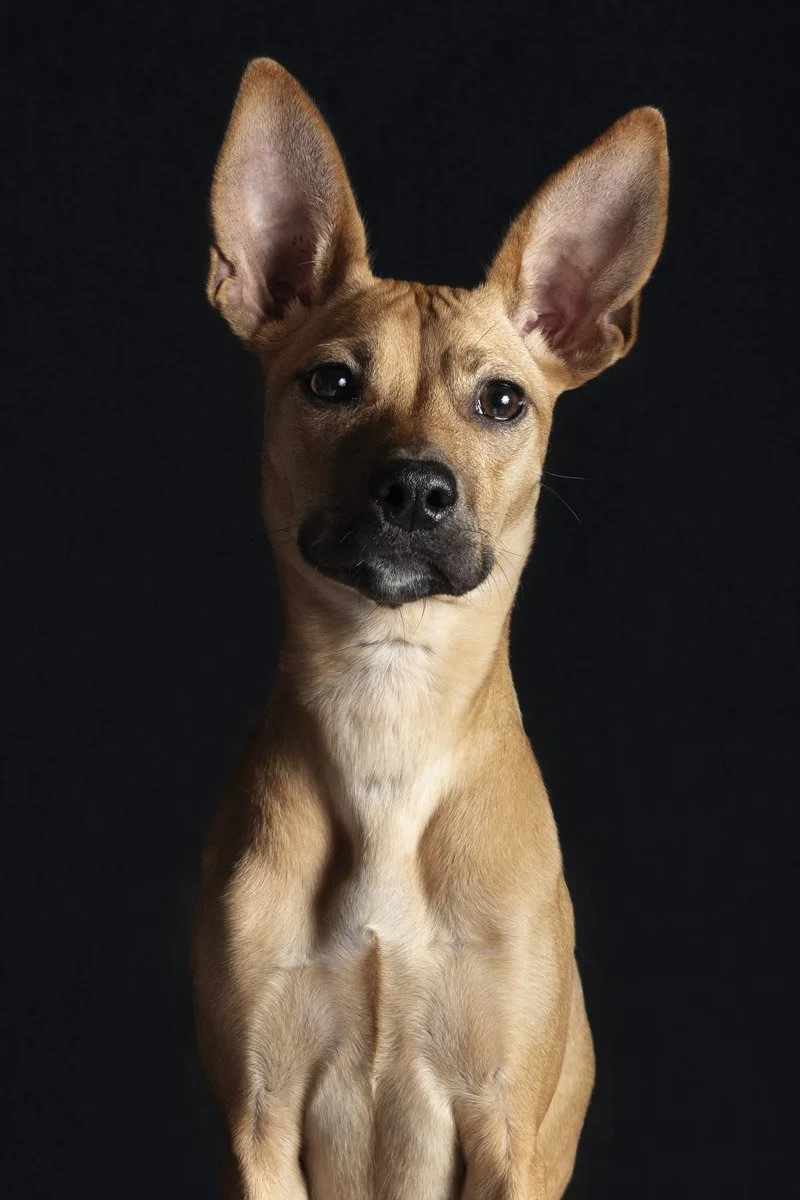My first experience with dog training was in a corporate environment. My therapist suggested I watch “The Dog Whisperer” with Cesar Milan to learn and be more assertive in the workplace. So, I took on the challenge, watched several seasons in marathon style in under a week, and took away one critical lesson from Cesar: to change a dog's behavior, you must first change the owner's.
Immediately, I noted where my behavior fell short and began applying dog training to my boss. While it inspired some exciting responses, it truly empowered me to change my environment and move on to better things. That was nearly two decades ago. I still use that lesson today but now apply dog whispering in my dog portrait studio.
My first pet portrait photo shoot was in a client's home, with a notable learning curve, chasing the dog with my camera for several hours. I was exhausted at the end of the shoot, not satisfied, allowing the dog to be in charge. There had to be a better way to achieve incredible dog portraits of a family's best friend and for a dog lover to display in their home.
I remembered the Dog Whisperer's lesson from long ago. I needed to change, not the dog. Consulting with a dog trainer, we discussed the unique challenges of photographing the diverse breeds and personalities of dogs received in my portrait studio, from anxious dogs under bright lights to high-energy dogs that won't sit or stay. While I knew I needed to be more assertive, I also knew I needed to let go. With each following dog portrait session, as my behavior changed, the ease of the sessions improved. I began to capture a higher volume of great images, and the dogs were happier, too.
Four dog training tips I use in the dog portrait studio:
1. Breathe: While I do this daily, it is also one of the most critical tools I apply. Before anyone arrives in the dog photo studio, I meditate, let go of unsettled energy and visualize a positive session. Dogs sense emotions and respond to the environment we create. Setting the tone for a calm, enjoyable photo shoot allows me to focus on connecting with the dog and capture their unique personality.
2. Warm-up: Both humans and dogs want to feel comfortable in a new space. When a dog arrives, I allow them to roam freely, sniff around, and feel at ease. Then, acclimate to the lights, sounds, and camera. Dogs naturally turn away from our iPhones, and cameras pointing at them can make them nervous. The same is true with a greeting of a direct hand from the front. Whether approaching from the side or bringing my self to their level, I slowly build trust before putting social pressure on them and asking them too much to do.
3. Learn the Job: Classic conditioning of basic commands is essential to having a dog sit and stay. Regardless of how well or little trained a dog is, learning a consistent task with high-value treats motivates them to stay engaged. Everyone can relish positive reinforcement, but I pay close attention to not overwhelm them.
4. Take a Break: Dogs lose their attention span quickly. During a dog portrait session, it is necessary to know when they need to take a break and recharge. Each temperament is different, and while some dogs work the scene for an hour, others need a break every 5 minutes. So this is when I let go and let dogs be divas in charge.
It began with Cesar Milan's one memorable lesson. Then I found my dog whispering technique for the dog photo studio, allowing me to provide an enjoyable, low-stress experience for everyone and capture soulful dog portraits for dog lovers to keep.


